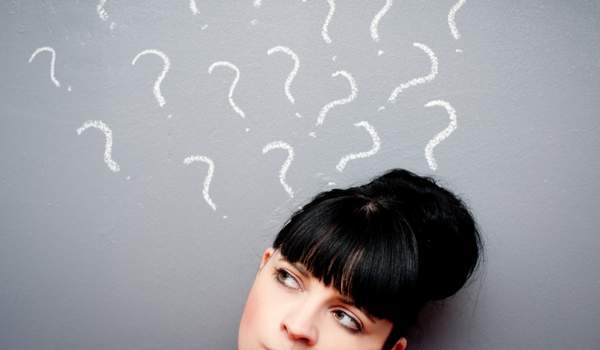Whole house water filters connect to your main water line and treat every drop before it flows through your home — from your kitchen tap to your washing machine.
They remove unwanted stuff like chlorine, sediment, and even industrial runoff, depending on the type. Think of them as your home’s water bouncer — keeping the bad stuff out before it ever hits your pipes.
🔑 Key Takeaways
- 🧪 Filters treat all water entering your home — not just your drinking water.
- 🔁 Most use multiple stages — starting with sediment and moving through carbon, KDF, or more.
- ⚙️ You can mix and match based on your water type (city vs. well) and your goals.
- 🧼 Some systems improve taste and smell, while others go after contaminants like lead or PFAS.
- 💡 The best filter is one that targets your water problems — and fits your home’s setup.
🏡 So, What Is a Whole Home Water Filter?

At its core, it’s a filtration system installed at the point where water enters your home — treating everything from your shower to your dishwasher. Instead of filtering just one tap like an under-sink unit, it catches contaminants before they reach any faucet.
Depending on the system, it might target chlorine, sediment, heavy metals, or even “forever chemicals” like PFAS — all before the water touches your plumbing.
💡 Think of it as the gatekeeper for your entire water supply — cleaning things up before you ever turn the tap — see our top picks here.
🔄 Whole Home vs. Under-Sink Filters — What’s the Difference?
Not all filters cover the same ground. A whole-home system treats every drop before it enters your pipes — so your bath water, laundry water, and drinking water all get filtered alike.
By contrast, under-sink and countertop systems clean just the water at a specific tap, usually for drinking and cooking. They’re great for targeted filtration but don’t protect your: shower, appliances, or washing machine from contaminants.
💡 Need help comparing the two? This guide on whole home vs. under-sink filters breaks down the pros, cons, and best use cases for each.
🧪 What Do Whole Home Filters Actually Remove?

The real power of a whole home system lies in what it catches before it ever reaches your tap. Depending on the setup, these systems can block a wide range of common water contaminants — especially the ones you don’t want building up in your pipes, shower, or glass.
| 💥 Contaminant | 🔍 Common Source or Concern |
|---|---|
| Chlorine & Chloramine | Municipal disinfection chemicals that affect taste, odor, and skin |
| Sediment | Rust, sand, and dirt from aging pipes or well water |
| Lead & Heavy Metals | Corroding plumbing, old infrastructure, or well systems |
| Pesticides & Herbicides | Runoff from lawns, farms, or roadside spraying |
| VOCs (Volatile Organic Compounds) | Industrial pollutants linked to health concerns |
| Pharmaceutical Residue | Trace medications found in some city water supplies |
| Microplastics | Tiny plastic particles from packaging and clothing |
| PFAS (“Forever Chemicals”) | Stain- and water-resistant products, fire foam runoff |
| Radon & Arsenic | Natural elements found in well water or groundwater |
Most homes don’t have all of these — but many have some. Testing your water is the best way to match the filter to your specific needs, so you’re not over-filtering or missing something important.
🧰 Types of Filters & How They Work Together

No single filter can remove everything. That’s why most whole home systems use a layered approach — combining different media to target a wide range of contaminants.
Let’s break down the most common types and what they’re good at:
| 🛠️ Filter Type | 🧪 What It Removes |
|---|---|
| Sediment Filter | Rust, dirt, sand, and larger particles |
| Carbon Filter | Chlorine, chloramine, VOCs, odors, bad taste |
| KDF Media | Chlorine, heavy metals, some bacteria & scale |
| Activated Alumina | Fluoride, arsenic |
| Alkalizing Filter | Raises pH, adds healthy minerals, improves taste |
| Ultrafiltration | Microorganisms, sediment, some viruses |
| UV Filter | Neutralizes bacteria, viruses, and parasites |
| Iron Filter | Removes iron & manganese through oxidation |
| Water Softener | Removes calcium & magnesium (hardness minerals) |
💡 Pro Tip: Most high-performance systems stack 2–3 of these filter types in a specific order — sediment first, carbon next, and anything specialty (like UV or softeners) last. This keeps each stage working longer and more effectively.
🧪 Do You Really Need a Whole Home System?

Not everyone needs a full-house setup — but for many households, it makes a noticeable difference.
Here’s a quick way to tell if it’s the right fit:
| ✅ Best Fit If You… | ❌ Might Not Need If You… |
|---|---|
| Have well water or outdated city plumbing | Only care about drinking water at one tap |
| Want to remove chlorine smell from showers | Already use a quality under-sink filter |
| Need protection against sediment, rust, or scale | Live in a rental or can’t modify plumbing |
| Have skin sensitivities or hard water problems | Have no taste or odor issues with your tap |
💡 Keep in Mind: Even if you’re happy with your drinking water, whole home filters improve what you bathe in and clean with — and that matters more than most people think.
🧪 How to Choose the Right System for Your Home

Choosing a filtration system isn’t about grabbing the biggest or most expensive option — it’s about matching the right filter to your water and your home’s needs.
Here’s how to narrow it down:
- 🔍 Start with a water test: Your city’s water report is a good starting point — but it doesn’t always tell the whole story. If you’re on a well, or just want peace of mind, use a certified at-home test kit or lab service.
- ⚙️ Know what you’re targeting: Not all filters remove everything. Some are great for chlorine and taste, others for heavy metals, VOCs, or PFAS. Check the specs — and look for NSF or third-party testing.
- 🏡 Think about household size: Larger families (or homes with multiple bathrooms) need higher flow rates. Undersized filters can reduce pressure and wear out faster.
- 🔄 Understand maintenance needs: Some filters last 6 months, others 10 years — but all need attention eventually. Choose something you’re comfortable maintaining, or plan for pro servicing.
- 💧 Decide what you really need: Do you want to fix taste and odor? Or are you trying to reduce chemical exposure, filter well water, or eliminate hard minerals? One stage might be enough — or you might need a full stack of solutions.
💡 Pro Tip: Some contaminants require specific filter media — like activated alumina for fluoride or KDF for heavy metals. If your water test shows multiple issues, a multi-stage system may be your best bet.
💲 How Much Do Whole Home Filters Actually Cost?

The price of a filtration system can vary — a lot. Some setups cost less than dinner for two, while others are more like a home appliance investment. But here’s what really drives the price tag:
| 💸 Factor | 🔍 What It Affects |
|---|---|
| 🧪 Number of Stages | More stages = more contaminants removed… and more cost |
| 🧱 Filter Media Type | Specialty media (like catalytic carbon or KDF) is pricier than basic carbon |
| 🛠️ Installation | DIY-friendly models are cheaper — pro installs add $300–$1,500 |
| 🧰 Maintenance Needs | Long-life filters cost more up front but save you in the long run |
| 🏡 Water Source | Well systems often need extra stages (like iron or UV filters) |
| ⚙️ Flow Rate | Higher capacity systems for large homes typically run more |
For basic setups, expect to spend around $300–$800. Advanced, multi-stage systems can cost $1,200–$2,500 or more, especially if they include softening or UV.
💡 Helpful to Know: Installation costs and filter lifespan can make a huge difference in total ownership costs. Want a full cost breakdown? Check out our updated guide on whole house water filter system pricing.
💭 Final Thoughts
Whole home water filters aren’t just a luxury — they’re one of the most effective ways to protect your water, your plumbing, and your peace of mind. Whether you’re dealing with chlorine, sediment, or more serious contaminants, the right system can make a noticeable difference throughout the entire home.
Just remember: no two filters are the same. Know what’s in your water, choose a system that fits your needs, and plan for regular maintenance to keep things running smoothly.
💡 Smart Tip: Not sure where to start? Look for systems that match your home’s size, water source, and specific concerns — and be wary of one-size-fits-all claims.m.
 105 people found this helpful. Was this guide helpful to you?
105 people found this helpful. Was this guide helpful to you? 

